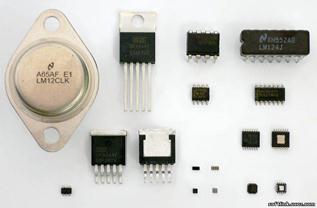THE STRUCTURE AND THE TYPES OF HYDRAULIC TRANSMISSIONS
intermitten – периодический, прерывистый, скачкообразный translational – поступательный actuator – привод port – отверстие, канал spool valve – золотниковый клапан retractible undercarriage – отодвигающаяся назад ходовая часть flap – створка, заслонка aileron – элерон (ав.) looping system – петлевая система damper – глушитель, амортизатор pump impeller – крыльчатка насоса, насосное колесо гидротрансформатора turbine runner – ротор
A large number of machines differing in purpose, principle and design are provided with mechanisms which perform similar functions. Among such mechanisms are transmissions, which are combinations of parts for conveying energy from the prime mover to the operating members. A hydraulic transmission may be defined as a system of energy transmission by means of a fluid. Any hydraulic transmission consists of two basic elements: a pump to convert mechanical work into hydraulic energy, and a hydraulic motor of reciprocating or rotary type to reconvert fluid energy into mechanical work. According to the motor kinematics, there are two main classifications of hydraulic transmissions: systems with intermittently operating (translational or reciprocating) motors, and systems with rotary motors. Both types are used in aviation engineering. One of the hydraulic systems is translational hydraulic actuator (fig. 4.). The working element of a translational hydraulic transmission is a cylinder with movable piston and rod. A typical hydraulic actuator consists of the pipes along which oil flows during working operation, when the piston is moving up and down. It also has the auxiliary piping. Oil from a tank is pumped to high pressure and directed to a control valve which admits it to the desired side of the actuator cylinder. The oil pushes the piston up against the load acting on the rod. Simultaneously, on the low-pressure side oil is emptied from the cylinder and returned through the respective ports of the spool valve to the tank. Such hydraulic systems are widely used in aircraft for operating retractible undercarriages, flaps, ailerons, etc. Such systems are powered by gear, radial-piston or swash-plate pumps. Gear pumps are used with automatic relief valves which bypass the hydraulic fluid when peak pressure is reached.
Fig. 4. Diagrammatic sketch of a translational hydraulic actuator: 1 – accumula- tor; 2 – automatic pump relief; 3 – filter, 4 – nonreturn valve; 5 – pump; 6 – control valve
Thus, in the hydraulic actuator a piston simply moves from one position to another acting along the piston rod. In some other cases the piston (rod) has to move according to a more complex law. In aircraft control systems it is a specific position of the rod corresponding to every position of the control column. This is achieved by means of a follow-up system incorporating a hydroamplifier or booster. The hydrobooster may be of two types: 1) with the control valve fitted inside the output rod and; 2) with the control valve placed outside the booster. Other devices in aircraft servomechanisms include: 1) a cylinder looping system, which provides for the automatic connection of both sides of the cylinder if pressure in the system drops; 2) a control-valve damper in which the control valve with the ball operates as a pump removing the fluid from the damper, where a vacuum is created (fig. 5.).
Fig. 5. Hydrobooster: 1 – control valve; 2 – output shaft; 3 – cylinder; 4 – piston; 5 – looping shuttles; 6 – damper valve; 7 – oil passages Another power control mechanism is presented in Fig. 6. Here the control valve is placed outside the booster, with the valve housing rigidly attached to the output rod. The looping system is designed to operate in the following manner. When there is no pressure in the booster, looping valve 4 is pressed by a spring into its extreme left position (as shown in the drawing), connecting the left-hand and right-hand sides of the cylinder. If oil enters the booster under pressure, the looping valve moves to the right, closing port 5 and disconnecting the two sides of the cylinder.
Fig. 6. Booster with external valve housing: 1 – cylinder; 2 – output shaft; 3 – control valve; 4 – looping valve; 5 – looping passages
According to the accepted classification of pumps into rotor-dynamic and positive-displacement machines, rotary hydraulic transmissions may be classified: 1) rotodynamic, or rotorkinetic; 2) positive – displacement transmissions. 1. Rotodynamic, or hydrokinetic, transmissions represent a combination of a centrifugal pump and a hydroturbine, with the pump impeller and turbine runner brought close together in the same case. To such type of transmissions belong fluid couplings (fluid drives or hydraulic clutches) and torque converters (fig. 7.) The difference between them is that the torque output of a fluid coupling is equal to the torque input. If it is necessary to multiply or reduce the torque, a torque converter is used. A fluid coupling consists of the input shaft, the output shaft, the pump impeller and the turbine runner. When the pump impeller, which is mounted on the driving shaft, starts turning, oil in the coupling is thrown outward and enters the turbine runner. The flow actuates the turbine runner, imparting to it the energy received by the oil in the pump impeller. The oil recirculates in a closed path inside the coupling and power is transmitted from one shaft to the other though there is no rigid connection between them. In aircraft rotor dynamic couplings are used to transmit torque from the starter engine to the rotor of the main gas-turbine engine.
Fig. 7. Hydraukinetic transmissions: a) fluid coupling; b) torque converter
2. Rotary positive displacement hydraulic transmissions represent a combination of a pump and a rotary displacement hydraulic motor. The motor is a pump working as an actuator. All rotary displacement pumps are reversible and can be used either as a pump or as a motor. This means that if hydraulic fluid is supplied to a rotary pump under sufficient pressure its rotor will revolve and do work. The most important application of rotary positive-displacement systems in aircraft is for driving stable-frequency a-c generators from the aircraft engines. Rotodynamic transmissions are finding growing application in ground vehicles (automobiles, tractors) and ship installations whenever it is necessary to develop an increased torque on the output shaft to start a vehicle from rest. As the vehicle accelerates the transmission ratio decreases smoothly, and then the input shaft is either connected directly with the output shaft or the torque converter automatically begins to operate as a fluid coupling. This is achieved by a mechanism which causes the reactor to rotate together with the pump impeller or turbine runner.
|








